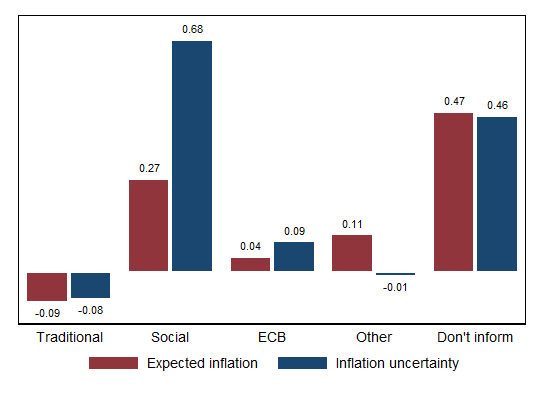References
Andre, P., C. Pizzinelli, C. Roth, and J. Wohlfart (2019). Subjective models of the macroeconomy: Evidence from experts and a representative sample. CESifo Working Paper 7850.
Bruine de Bruin, W., W. Vanderklaauw, J. S. Downs, B. Fischhoff, G. Topa, and O. Amantier (2010). Expectations of inflation: The role of demographic variables, expectation formation, and financial literacy. The Journal of Consumer Affairs 44 (2), 381-402.
Bundesbank (2019). The relevance of surveys of expectations for the Deutsche Bundesbank. Monthly Report 12/19.
Candia, B., O. Coibion, and Y. Gorodnichenko (2020). Communication and the beliefs of economic agents. NBER Working Paper 27800.
Conrad, C. and M. Hartmann (2019). On the determinants of long-run inflation uncertainty: Evidence from a panel of 17 developed economies. European Journal of Political Economy 56, 233-250.
D’Acunto, F., D. Hoang and M. Paloviita and M. Weber (2019). Cognitive abilities and inflation expectations. American Economic Review, Papers & Proceedings 102, 562-566.
Eminidou, S., M. Zachariadis, and E. Andreou (2020). Inflation expectations and monetary policy surprises. Scandinavian Journal of Economics 122 (1), 306-339.
Malmendier, U. and S. Nagel (2011). Depression babies: Do macroeconomic experiences affect risk taking? The Quarterly Journal of Economics 126 (1), 373-416.
Malmendier, U. and S. Nagel (2016). Learning from inflation experiences. The Quarterly Journal of Economics 131 (1), 53-87.






